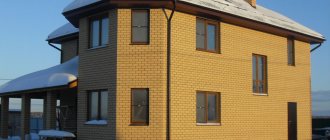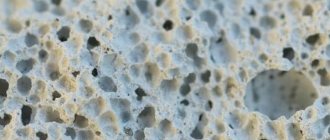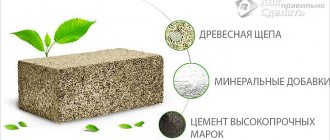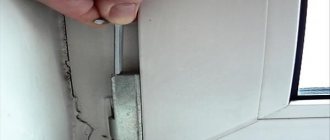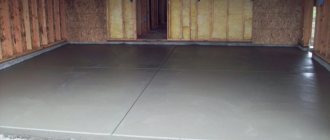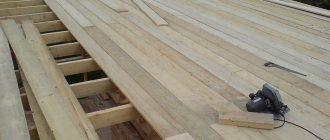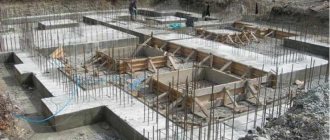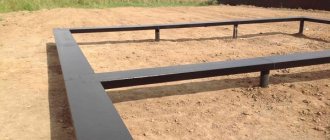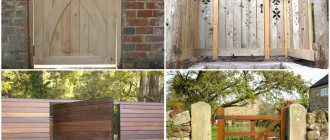Today, the construction market cannot be blamed for not having a wide range of materials: you can buy almost anything and everything. Therefore, when planning to build your own home, you don’t have to rack your brains for a long time about what to build your home from. But there is a problem: such large-scale work promises to be very expensive, and this circumstance is unlikely to make anyone happy. However, there is a way out: independent production of the material. We are talking about cinder blocks, which have one big advantage over their “colleagues”: you can relatively easily make a machine for making such bricks at home. This plus is a chance to significantly reduce the cost of your future home.
Features of wall material
One of the secrets of the popularity of cinder blocks is their low cost. The reason for this is the ability to use waste from metallurgical production and other fillers in the manufacture of products, which are easy to obtain.
Supplements
In addition to Portland cement and sand, cinder blocks may include:
- wood chips;
- gypsum;
- granite chips;
- expanded clay;
- brick fight;
- fine gravel;
- ash;
- perlite;
- broken glass;
- needles;
- slags;
- crushed stone screening.
The proportions when mixing the solution depend only on the selected raw material - on the composition of the fillers. A mandatory requirement is sufficient thickness to prevent the mixture from spreading. The grade of cement plays an important role: it should be quite high - at least M400.
To improve performance characteristics, plasticizers are sometimes added: usually 5 grams are taken per block. This component provides frost resistance, strength, and improves water resistance.
Proportions
There is no universal “slag” composition. Each artisan who has been making cinder blocks for quite some time has his own, time-tested, ratio of components. If we talk about industrial production, they use the following recipe:
- blast furnace slag - 7 parts;
- coarse sand - 2;
- Portland cement - 1.5;
- water - 1.5-3.
To obtain colored cinder blocks, additional chalk or crushed red brick is added to the solution. Questions may arise regarding the amount of water. You need enough liquid so that the mixture does not spread. It's simple - you need a test. To ensure the ideal consistency, a handful of the prepared solution is thrown onto the ground. The correct mixture should crumble. If you collect it and then squeeze it in your fist, it should again become a dense lump.
Made independently, the machine for making blocks makes it possible to produce different cinder bricks:
- Solid products. Their advantage is the maximum safety margin. Disadvantage: low thermal insulation qualities.
- Hollow blocks. They retain heat quite well and have decent sound insulation characteristics. To provide the material with the required level of strength, the volume of the cavities should be 1/3 of the total volume.
Exceeding this proportion does not guarantee the reliability of cinder blocks if they plan to build load-bearing walls. For interior partitions, as well as as a facing material, you can use products with a high void ratio of 40%.
The dimensions of homemade products can be any. Some settle on standard sizes - 190x188x390 mm, but many decide to use multiple sizes - 200x200x400 mm. The reason is the ability to simplify the interface with other elements of the building being constructed.
Characteristics
They may vary slightly. The quality depends on the manufacturing method, on the waste that is used as fillers. However, any material has common characteristics.
- Weight. The weight of a hollow block is 18-23 kg, a solid slag concrete stone is 25-28 kg. There are semi-blocks (90x188x390 and 120x188x390 mm), they tighten by 10-13 kg.
- Coefficient of thermal conductivity. Here, the properties of the wall material depend more on the type of fillers, however, the indicators of cinder blocks are among the lowest: 0.27-0.65 W/m*K.
- Density and compressive strength. The first indicator depends on the properties of the fillers and can be 750-1455 kg/m3. Brands of slag concrete - M35-M150. The number means kilograms, the pressure of which leads to complete destruction of the sample.
- Service life - 30 years (handicraft production), 100 years (industrial production). The durability of the material is affected by the climatic zone in which the building is located.
- Environmental friendliness. In this “nomination” cinder blocks are at the bottom of the list, since waste from metallurgical production does not give hope for the safety of the product. For this reason, they are recommended to be used only for the construction of utility buildings or garages.
Despite the last point, factory-made cinder blocks remain a very popular building material in low-rise construction. Not only walls are built from them: some choose these stones to build a foundation. However, homemade bricks are completely unsuitable for this important role. But there is a chance to get products without particularly dangerous components.
How to make foundation blocks yourself?
The construction of even a small country house, wooden or brick, requires considerable material costs. Moreover, 18-20% of the total cost of building a house falls on foundation work: purchasing blocks, paying hired builders, paying for the operation of equipment. This part of the cost can be completely eliminated if you make the blocks yourself.
Block foundation diagram.
The strength and reliability of self-made concrete blocks are not inferior to purchased ones. The technology for their manufacture is simple. The first thing to do is calculate the dimensions of the future foundation block. Its length should easily fit into the foundation, without sawing, etc. In addition, the blocks must be lifted without lifting equipment.
Required tools and materials
To work you need to prepare:
- collapsible formwork in which the blocks will be poured,
- Portland cement M300,
- crushed stone, fraction no more than 10 mm,
- coarse sand, fraction 1.5 mm,
- water,
- shovel,
- construction trowel,
- wood hacksaw,
- metal scissors or hacksaw,
- electric drill.
Making formwork with your own hands is quite doable. For this you will need:
- 2 boards 20 mm thick. You can use moisture-resistant plywood,
- steel sheet 1 mm thick,
- metal rod with a diameter of 12 mm,
- 2 M12 nuts.
The boards are taken with a width equal to the height of the blocks and a length equal to the length of the blocks plus 20 cm. One of the flat sides of each board is planed and painted with waterproof paint. On the painted side of the boards, on each side, at a distance of 10 cm from the edge, you need to make 2 transverse cuts 5-6 mm deep. There should be a distance between the cuts equal to the length of the block. On the sides of the boards, approximately in the middle between the notch and the edge, holes with a diameter of 14 mm are drilled to tie the formwork.
2 rectangles are cut out of the steel sheet, which will cover the sides of the formwork. The length of one side of the rectangle is equal to the height of the block, the length of the other will be 10 mm greater than its width. All that remains is to make the tightening rods. The length of the rods is taken 80-90 cm greater than the width of the blocks. If it is not possible to make carvings on the ends of the rods yourself, you can contact a workshop.
The formwork is easy to assemble. This is done like this: the boards are placed parallel to each other on the side edges, and the painted surfaces should be facing each other. Tension rods are inserted into the holes. Metal rectangles are inserted into the grooves from the cuts - the ends of the formwork. Place nuts on the rods, but do not tighten them completely.
First you need to install the wooden inserts next to the rods, only then can you tighten the nuts completely.
Inserts fix the width of the blocks.
Manufacturing of foundation blocks
Drawing of the foundation block.
Do-it-yourself foundation blocks are most often made from concrete grade M200, class B15. If everything was done correctly, such strength is quite enough to support a house of 1-2 floors. The higher the grade of cement, the stronger the blocks. For concrete grade M200, use Portland cement grade M300, fine crushed stone (up to 10 mm) and coarse sand (at least 1.5 mm). If concrete is reinforced with pieces of metal wire, the blocks will become even stronger.
It is not difficult to make concrete mortar yourself. All dry ingredients are taken in a ratio of 1:4:2, respectively, and mixed with a shovel in a metal or wooden container. Continuing to stir, gradually add water. Water is added in portions until the mixture becomes plastic and viscous. They check the “readiness” of the concrete this way: take a little solution into your fist and squeeze it tightly. The lump on the open palm should not fall apart, but there should not be a trace of dirt on the skin. Now you can start pouring concrete into the formwork.
Pros and cons of homemade blocks
Before you decide to assemble a machine for making blocks yourself, you need to get acquainted with their advantages and disadvantages in order to understand whether this idea will bear fruit. Own production gives you a chance to:
- obtain a material with excellent sound and heat insulation characteristics;
- make fairly large blocks, which, as builders say, have a fairly low weight;
- reduce the cost of construction, since self-made cinder blocks are much cheaper than factory ones;
- simplify and speed up construction work, because the material is relatively easy to cut, and walls can be erected quickly due to their light weight.
The most attractive feature of homemade blocks is the cost savings. If we give average figures, then from one bag of cement we get approximately 36 cinder concrete bricks. Self-produced blocks also have weaknesses. This:
- fragility, since the service life of a building made from handicraft material is about 30 years;
- not a very impressive safety margin, it does not allow the construction of a structure higher than 2 floors;
- high risk of material destruction during loading or transportation;
- possible cracking of the cinder block mass during shrinkage of the building;
- high water absorption requiring waterproofing;
- unattractiveness of the walls.
Low strength indicators are the reason why it is not recommended to build reliable structures “for centuries” from homemade slag concrete. Home production has one, but significant drawback. A basic machine for making blocks does not make it possible to follow the technology exactly, since artisans have to skip the steaming procedure, which guarantees the required temperature and moisture saturation.
Due to the not very attractive appearance and indifference to moisture of such structures, they need cladding. But these disadvantages do not stop developers, who are attracted by the opportunity to save money but relatively quickly get a small house or a reliable outbuilding.
Industrial equipment
The minimum set of equipment for producing concrete blocks at home is a mold and a press. A construction trough is suitable for preparing concrete, and a shovel is suitable for dosing ingredients and mixing the mixture. True, this set is enough for 20-40 cast blocks per shift; production at this rate will ensure the construction of a house or a good-quality garage only in 6-8 months.
You can intensify production by using small-scale mechanization means - an electric brick press for 1 mold and a concrete mixer for 120-140 liters will provide a significant increase in productivity! True, here you will have to look for a large site so that the equipment for the production of concrete blocks can be fully used.
To start a successful business in the production of building materials, you need not only to produce large volumes of products, but also to offer the consumer an assortment that differs from that of competitors. To do this, it is necessary to establish the production of materials for load-bearing walls, partitions and partitions, and non-standard shaped blocks. It is possible to produce such an assortment only by using industrial samples of equipment for the production of concrete blocks. The installation usually includes a container for preparing the solution, a brick press and a control panel. The installation itself is made mobile, so that after making one batch of molds it can be moved to another place so that the blocks begin to dry.
For a mini-factory, equipment with a greater degree of automation and a reduction in the share of manual labor is used. A line for the production of concrete blocks requires a mixer for preparing the solution, molding containers and a separate room with climate control equipment to speed up the drying process. The productivity of the line will also require a packaging line and a warehouse for storing products ready for shipment to the consumer.
When planning to produce blocks from cellular concrete, production must be supplemented with an autoclave to dry the material under pressure. The line in this case will allow the production of cellular concrete of a specific shape and purpose, supplying the customer with a ready-made set of blocks for the construction of a house or garage.
Manual block making
If large-scale construction is not planned, and the material is needed for a small outbuilding, then it is quite possible to get by with “little expense” - making simple forms for cinder concrete bricks.
For home-made walls, it is more advisable to use sheet metal or wood, but only high-quality processed and polished wood. The dimensions are chosen by the craftsmen themselves, but it’s easier to stick with the more convenient ones - 200x200x400 mm. To obtain hollow products, bottles (for example, champagne) are used. Another option is metal cylinders. Their diameter is at least 80 mm. The process itself looks like this:
- First, a collapsible matrix consisting of several cells is assembled. Bottles are placed inside - 3 for each cinder block.
- The inner sides of the finished structure for blanks are coated with machine oil, and do not forget to treat the bottles with it.
- Prepare a soft (having a high water content) solution, which is immediately poured into molds. The surfaces are leveled, excess mixture is removed, then covered with film.
- After the mixture has set (after a few hours - 5-6), they take out the bottles, but do not touch the blocks: they are again covered with plastic wrap and left to gain strength for another day.
- The mold is disassembled, and the blocks are transferred to a ventilated room, or under a canopy, where they are laid in low stacks on a flat surface. Or left outdoors, weather permitting.
The optimal temperature is above +20°, as well as the highest possible humidity. Cinder blocks take a month to reach condition. After this, the material can be considered ready for construction work.
Production technology
For casting standard concrete blocks from a sand-concrete mixture, the most primitive technology is most often used, which does not require significant capital investments and complex equipment. The technology for the production of concrete blocks is based on the principle of uniform hardening of the concrete mixture in natural conditions at normal air temperatures.
A model illustrating the process of preparing and hardening a concrete solution will be a description of the process of pouring the form of a foundation or monolithic slab:
- Preparation of the form;
- Preparation of concrete solution;
- Pouring the solution into the mold;
- Compaction of the solution;
- Shrinkage of the mixture;
- Removing formwork;
- Final drying of the mixture and set of concrete working hardness.
In principle, this scheme is quite suitable for pouring a large volume of concrete, but for a concrete block for building walls it is only partially suitable. The fact is that to form a regular rectangle with clear edges on the sides and a smooth surface on the outer edges, it is necessary to use a concrete solution with a minimum water content. Thus, crumbly concrete is obtained, which, when placed in a mold and subsequently compacted using vibration and press pressure, is knocked down into a dense mass capable of holding its shape.
The use of concrete with a high water content, on the contrary, does not entail the formation of a rigid shape, but the squeezing out of the mass of moisture, which is not able to withstand the rigidity given to it; it simply floats.
When preparing the solution, the order in which the components are added is observed: filler, cement, water, plasticizer.
Manufacturing technology involves optimizing the production process through the use of equipment for the production of concrete blocks in the form of a vibrating machine or vibrating plate. In the first case, the molded element is left to dry on the platform after removing the vibrating machine mold; in the second case, the silicone mold remains on the element until the drying process is completed.
Using a vibrating press, the following are formed:
- Solid wall block;
- Reinforced wall block with voids;
- Lightweight hollow wall block;
- Half block or half block;
Using a vibrating table and silicone molds, the following are produced:
- Facing block;
- Block imitating stone;
- Decorative tiles or elements for decorating facades, paths, fences.
However, the technological process itself will not be complete without the last stage, in which the remaining moisture evaporates from the concrete, and it gradually begins to gain its strength. Drying plays an important role, because in addition to the evaporation of moisture, a second equally important process also occurs simultaneously - the gradual hardening of cement.
For production under normal conditions, drying occurs at normal temperatures with a minimum daily amplitude of fluctuation, and for extreme conditions, for example, for temperatures below +5 degrees Celsius, synthetic additives and additives for concrete at low temperatures must be used.
To control quality and determine the readiness of blocks for transportation and use in construction, a standard scale for concrete strength gain is used - 3,5,7 days the form can be lifted and carried, on days 9-11 it can be stacked, on days 28 it can be used in construction.
Homemade machine for making blocks
This device will make it possible to obtain more reliable building materials, as well as speed up the production process itself. Assembling it does not promise any special difficulties in manufacturing, however, such equipment will be able to compete even with factory analogues.
The most basic version of a vibrocompression machine consists of a matrix, a hand press and a vibrator. To minimize physical stress, the “press” can be easily improved - use a lever system.
Materials, tools
To assemble a machine for making blocks, you need to prepare and/or purchase:
- sheet metal, minimum thickness - 3 mm;
- pipes for voids, diameter - from 8 to 10 mm;
- channel, metal strip (3 mm);
- electric motor (up to 1 kW);
- grinder, metal disc;
- welding machine;
- metalworking tools;
- vice;
- cotter pins;
- fasteners: bolts, nuts, washers.
The dimensions and shape of the matrix are chosen independently, since these parameters depend only on the scale of block production.
How is the equipment made?
The manufacture of a homemade vibratory pressing machine occurs according to the following scenario:
- Using a grinder, blanks are cut out of sheet metal for the walls of the mold, as well as for internal partitions. An extra 50 mm is added to the height; it will be necessary for compacting concrete.
- The pipe is cut into as many sections as necessary for the voids of all bricks made at the same time. Each of them must have three holes. The length of each element is less than the height of the matrix: the difference is 3-5 mm.
- Cylindrical segments are converted into conical ones. The pipes are first cut to the middle, then the blanks are crimped in a vice. Now it’s time for welding work: this is connecting the sides of the crimped pipes, tightly welding the elements on both sides.
- The next step is to connect each three blanks with metal plates. Then a plate is added from both edges of the “tubular” row for fastening to the walls. Holes are made in them for fixing to the eyes.
- Cuts are made in the middle of each compartment. Eyelets are welded on the outside of the mold. They make it possible to temporarily attach pipes to obtain voids. In this case, by removing the cylinders, you can make solid cinder blocks.
- By welding the outside of the long (or transverse, it depends on the size of the machine) wall, four bolts are welded to fix the electric motor-vibrator. A metal apron is welded on top, and blades are welded along the edges.
- A press with handles and holes for limiter pipes is made from a thick plate. Their diameter is slightly larger than that of pipes: the press should go 50-60 mm deep into the matrix, but no more.
- Mount the engine. Eccentrics are welded onto the shaft. These are bolts that are fixed parallel to the shaft, leaving room for the nuts. The axes of the fasteners must coincide. Nuts are screwed onto the bolts; they will make it possible to change the strength and frequency of vibration.
- The machine is cleaned, polished, primed, dried, and then painted. The last necessary operations are cotter pinning (locking) of threaded connections and grounding of the electrical part.
Performance
This unit will not be able to guarantee large volumes of production, however, such goals are not usually set in the household. They say that by working together with a matrix of several cinder blocks, you can make dozens of stones in a day. The numbers here vary greatly, so it makes no sense to cite them as an example.
To slightly improve the machine for making blocks, a simple lever system is added to press down the press. For mobility, wheels are welded to the supporting frame of the installation.
Methods for making concrete blocks with your own hands - mortar proportions and work procedure
Do you want to build a shed at your dacha or a fence, or maybe the dacha itself?! Then concrete blocks will come to your aid. Their name speaks for itself. FBS - foundation blocks of walls. We can say that this is one of the most common types of materials used in the construction of foundations.
Depending on your goals, you will choose products of different densities, weights, and heights. For example, blocks made of lightweight concrete are very mobile, since their weight is much lighter than other types. They usually consist of porous concrete or foam concrete. Lightweight ones are suitable for building both internal and external walls.
Characteristics and properties
Blocks made of ordinary concrete are heavy, so it is used less in construction. Their prices are also correspondingly lower. Load-bearing capacity refers to whether they can withstand a certain load. In this quality, heavy blocks are superior to foam concrete. But you can also find materials made from lightweight concrete that are perfect even for load-bearing walls.
